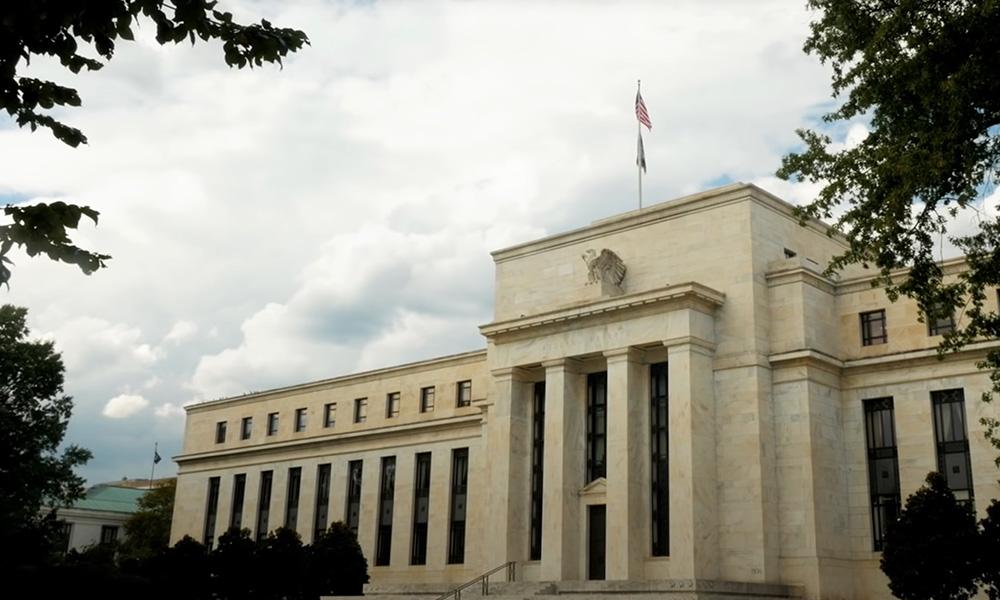From December to September! Why is Goldman Sachs optimistic about the Fed's early rate cut?
2025-07-02 10:27:04

Why did Goldman Sachs anticipate a rate cut in advance?
Tariff impact lower than expected
Goldman Sachs economist Jan Hatzius and his team pointed out in the latest report that the next time the Federal Reserve cuts interest rates may be brought forward to September, rather than December as previously expected. The core reason is that they believe that the impact of the tariff policy implemented by the Trump administration on inflation is far less severe than expected. Previously, Goldman Sachs had worried that summer tariffs might push up monthly inflation data, causing the Federal Reserve to remain cautious in the short term and postpone rate cuts. However, the latest evidence shows that tariffs have a limited impact on consumer prices, and the overall trend of slowing inflation is more significant. The report mentioned: "The impact of tariffs seems to have only a one-time impact on the price level, rather than persistent inflationary pressure." This judgment prompted Goldman Sachs to reassess the Fed's policy rhythm.
Fed officials soften stance
In addition to tariff factors, voices within the Federal Reserve also provide support for the expectation of an early rate cut. Recent statements by some members of the Federal Open Market Committee (FOMC) of the Federal Reserve show that they are open to a rate cut in September as long as the inflation data to be released soon does not show a sharp increase beyond expectations. In particular, the remarks of Federal Reserve Governor Bowman further strengthened this possibility. She said that even if the inflation data is slightly firm, if it is mainly driven by the tariff effect, FOMC members may not be too worried. This change in attitude paves the way for a rate cut in September.
Rate cut path and target rate outlook
Specific plans for three interest rate cuts
According to Goldman Sachs' latest forecast, the Federal Reserve will cut interest rates by 25 basis points each in September, October and December 2025, for a total of 75 basis points. This will reduce the federal funds rate from its current level to a range of 3.50% to 3.75%. In the longer term, Goldman Sachs expects two more rate cuts in 2026, each of 25 basis points, to eventually stabilize interest rates in the range of 3.0% to 3.25%. This terminal interest rate is lower than Goldman Sachs' previous forecast (3.5% to 3.75%), reflecting its more optimistic expectations for future inflation and economic environment.
The key role of the labor market and inflation expectations
Goldman Sachs pointed out that signs of weakness in the labor market and a decline in household inflation expectations provide more room for the Fed to cut interest rates. Recent surveys show that consumers' expectations for future inflation are weakening, which reduces the need for the Fed to maintain high interest rates. In addition, if the upcoming non-farm payrolls report shows that the job market is further weakening, the Fed may be more motivated to adopt loose policies in advance. Goldman Sachs emphasized in the report: "Although the Fed is trying to set a higher threshold for rate cuts, any negative signals in employment data may reduce the resistance to early rate cuts."
Market reaction and Trump's pressure
The dual volatility of the US dollar and Treasury yields
The news that Goldman Sachs adjusted its rate cut expectations quickly triggered a market reaction. Traders increased their bets on the Fed's rate cut, causing the US dollar index to fall to a three-year low on Tuesday. At the same time, the 2-year US Treasury yield, which is highly sensitive to monetary policy, fell to 3.709%, close to its lowest level in two months. These market dynamics reflect investors' strong expectations for the Fed's policy shift and also add more focus to the release of subsequent economic data.
Trump's continued pressure
Meanwhile, Fed Chairman Jerome Powell is facing further pressure from U.S. President Donald Trump, who has publicly said the Fed should slash interest rates to as low as 1% to stimulate economic growth. Such political intervention adds complexity to the Fed's policy decisions. Nevertheless, Goldman Sachs believes that the Fed is more likely to adjust its policy direction based on economic data rather than political pressure.
Future Outlook: Opportunities and Challenges of the Rate Cut Path <br/>On the whole, Goldman Sachs has brought forward the Fed's rate cut expectations to September, reflecting the latest judgment on inflation, the labor market, and the impact of tariffs. This forecast not only provides new investment clues for the market, but also adds more possibilities to the Fed's monetary policy path. However, the adjustment of the rate cut rhythm is still facing uncertainty. The upcoming non-farm payrolls report and inflation data will become key variables and may further affect the Fed's policy decisions. In addition, the Trump administration's tariff policy and geopolitical factors may also bring new variables to the economic environment.
- Risk Warning and Disclaimer
- The market involves risk, and trading may not be suitable for all investors. This article is for reference only and does not constitute personal investment advice, nor does it take into account certain users’ specific investment objectives, financial situation, or other needs. Any investment decisions made based on this information are at your own risk.










